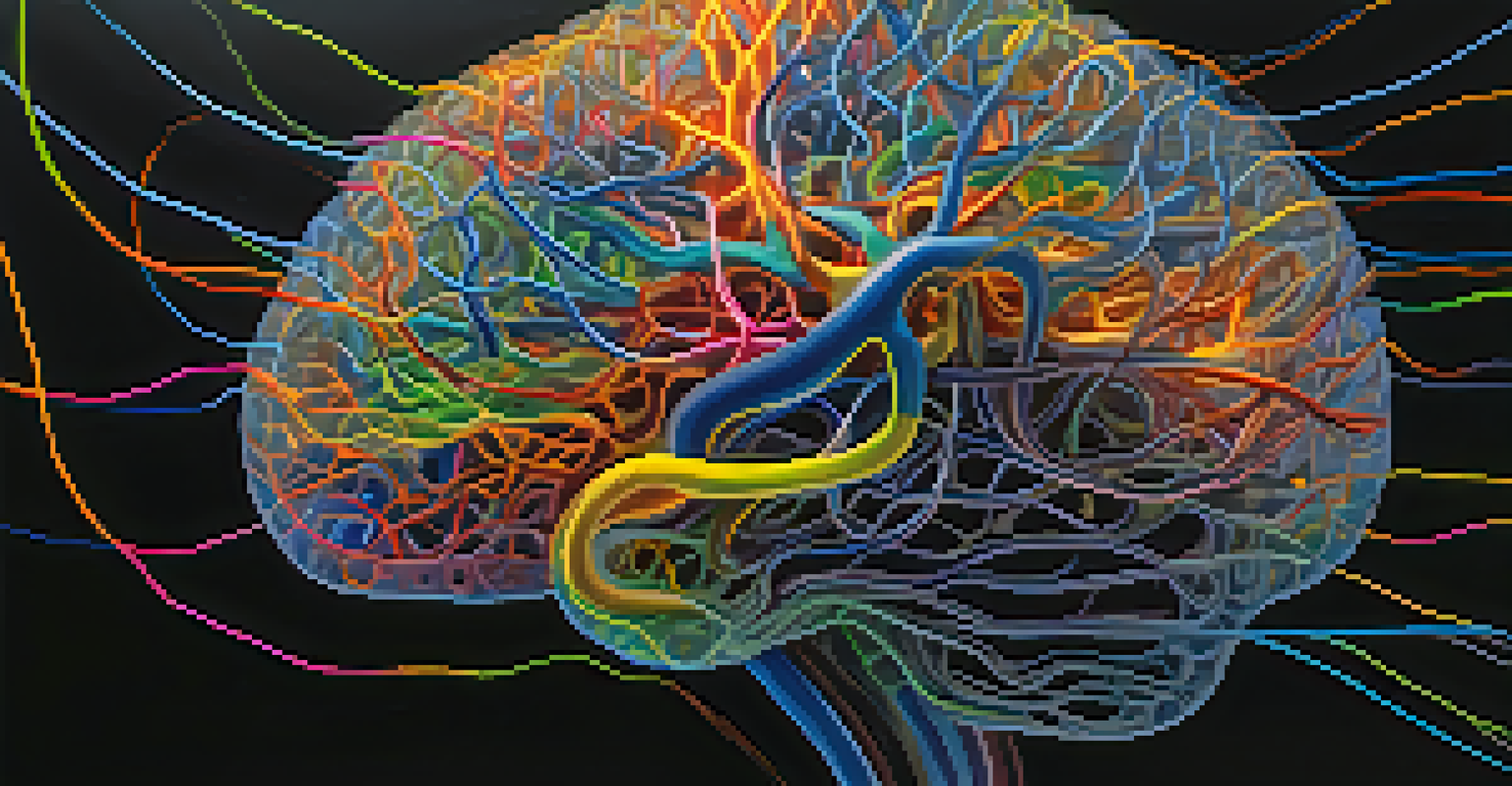Physiological Responses to Entheogens: What We Know

Understanding Entheogens and Their Use
Entheogens are substances that have been used for centuries in various cultures for spiritual and medicinal purposes. Common examples include psilocybin mushrooms, ayahuasca, and peyote. These substances can alter perception and consciousness, leading many to explore their potential for healing and self-discovery.
Entheogens are the key to unlocking our inner potential and connecting us to the divine within.
The term 'entheogen' comes from the Greek words meaning 'generating the divine within.' This highlights their historical context as tools for introspection and connection with the spiritual world. Modern interest in these compounds has surged, particularly in therapeutic settings.
As research expands, scientists are uncovering how entheogens interact with our physiology, opening doors to new understanding and applications in mental health and well-being.
The Brain's Response to Entheogens
When consumed, entheogens impact the brain's neurotransmitter systems, particularly serotonin. This neurotransmitter plays a crucial role in mood regulation, and its interaction with entheogens can lead to profound changes in perception and emotional state.

For instance, psilocybin has been found to increase neural connectivity, allowing different regions of the brain to communicate more freely. This can result in experiences that feel transcendent or deeply insightful, as the brain processes information in novel ways.
Entheogens Enhance Self-Discovery
Entheogens like psilocybin and ayahuasca have been used for centuries for spiritual insights and healing.
Understanding these neurological effects is essential for grasping how entheogens can promote therapeutic benefits, such as reduced anxiety and depression.
Physiological Effects on the Body
Entheogens don't just affect the brain; they also elicit various physiological responses throughout the body. Common effects include changes in heart rate, blood pressure, and even body temperature. These changes can vary widely depending on the substance and the individual.
The mind is like a parachute. It doesn't work if it isn't open.
For example, ayahuasca can induce nausea and vomiting, which many cultures interpret as a purging process, both physically and spiritually. This bodily reaction is often seen as a necessary step in the healing journey.
Recognizing these physiological responses is crucial for safely navigating the use of entheogens, especially in therapeutic contexts.
The Role of Set and Setting
One of the most important factors influencing the experience with entheogens is the concept of 'set and setting.' 'Set' refers to the individual's mindset and expectations before using the substance, while 'setting' pertains to the physical and social environment.
A positive mindset and a supportive environment can enhance the experience, leading to insights and healing. Conversely, a negative mindset or a chaotic environment can lead to challenging experiences or 'bad trips.'
Therapeutic Benefits and Risks
While entheogens show promise in treating mental health issues, caution is necessary due to potential risks.
This emphasizes the need for careful preparation and guidance, especially in therapeutic settings where entheogens are being explored for treatment.
Potential Therapeutic Applications
Recent studies have shown promising results for the therapeutic use of entheogens in treating conditions like PTSD, depression, and anxiety. In controlled settings, substances like psilocybin and MDMA have demonstrated the ability to foster emotional breakthroughs.
Therapists guide patients through their experiences, helping them to process emotions and memories in a safe space. This can lead to lasting changes in perspectives and reduced symptoms of mental health disorders.
As research continues, the potential for entheogens to revolutionize mental health treatment becomes increasingly evident.
Risks and Considerations
While entheogens hold great potential, they also come with risks. Not everyone is suited for their use, and individuals with a history of mental health issues may face adverse effects. It's crucial to approach these substances with caution and respect.
Additionally, the legality of entheogens varies widely around the world, affecting accessibility and the ability to conduct research. As interest grows, so does the need for informed discussions about their use.
Importance of Set and Setting
The mindset and environment significantly influence the experiences and outcomes when using entheogens.
Understanding the balance between risks and benefits is essential for anyone considering the use of entheogens, especially in therapeutic contexts.
The Future of Entheogen Research
The field of entheogen research is still in its infancy, but the future looks promising. With increasing acceptance and interest from both the public and scientific communities, we can expect more studies exploring their effects and potential applications.
Innovative research could lead to new treatments for various mental health conditions, as well as a deeper understanding of human consciousness and spirituality. This journey into the unknown could redefine our approach to health and well-being.

As we continue to explore the physiological responses to entheogens, we may uncover insights that challenge our conventional views on healing and the human experience.